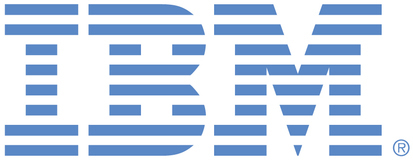
This portal is to open public enhancement requests against IBM Power Systems products, including IBM i. To view all of your ideas submitted to IBM, create and manage groups of Ideas, or create an idea explicitly set to be either visible by all (public) or visible only to you and IBM (private), use the IBM Unified Ideas Portal (https://ideas.ibm.com).
Shape the future of IBM!
We invite you to shape the future of IBM, including product roadmaps, by submitting ideas that matter to you the most. Here's how it works:
Search existing ideas
Start by searching and reviewing ideas and requests to enhance a product or service. Take a look at ideas others have posted, and add a comment, vote, or subscribe to updates on them if they matter to you. If you can't find what you are looking for,
Post your ideas
Post an idea.
Get feedback from the IBM team and other customers to refine your idea.
Follow the idea through the IBM Ideas process.
Specific links you will want to bookmark for future use
Welcome to the IBM Ideas Portal (https://www.ibm.com/ideas) - Use this site to find out additional information and details about the IBM Ideas process and statuses.
IBM Unified Ideas Portal (https://ideas.ibm.com) - Use this site to view all of your ideas, create new ideas for any IBM product, or search for ideas across all of IBM.
ideasibm@us.ibm.com - Use this email to suggest enhancements to the Ideas process or request help from IBM for submitting your Ideas.
IBM does not intend to provide a solution to this request at this time, so it is being closed.
The database team has a long list of higher priority requirements, so this request is not likely to be implemented anytime soon.
Hello,
With Db2 for i, you can pull data from a target RDB via INSERT with subselect, CREATE TABLE AS, and DECLARE GLOBAL TEMPORARY TABLE AS.
To accomplish your requirement to compare user profiles against a target IBM i would require two steps if you use the technique above.
It is also possible for you to create your own UDTFs where you aggregate data from external sources and return them to the caller.
In this sense, you can achieve a result in a single query, if the UDTF pulls the data from the remote databases.
Db2 Connect includes the support to allow multiple databases to be referenced in a single query.
Since there are viable alternatives that can be used, this request is unlikely to be implemented in the near term.
Regards, Scott
Due to processing by IBM, this request was reassigned to have the following updated attributes:
Brand - Servers and Systems Software
Product family - Power Systems
Product - IBM i
Component - Db2 for i
Operating system - IBM i
Source - None
For recording keeping, the previous attributes were:
Brand - Servers and Systems Software
Product family - Power Systems
Product - IBM i
Component - Languages - Other
Operating system - IBM i
Source - None
Great RFE,
However, I think there is already an RFE regarding the use of three-part-names for joins and other SQL in general. This RFE is in the same category as three-part-names in UDTF and stored procedures.
https://www.ibm.com/developerworks/rfe/execute?use_case=viewRfe&CR_ID=120817